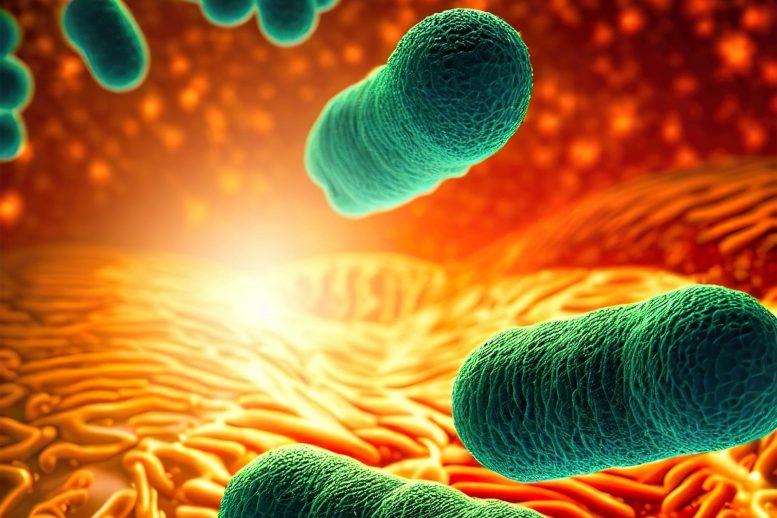
Researchers have found that certain extremophilic bacteria can reduce asbestos toxicity by removing iron, silicon, and magnesium from asbestos minerals. Further analysis is required to optimize treatment methods for detoxification and potential reuse.
Asbestos materials were once widely used in homes, buildings, automobile brakes, and many other built materials due to their strength and resistance to heat and fire, as well as to their low electrical conductivity. Unfortunately, asbestos exposure through inhalation of small fiber particles has been shown to be highly carcinogenic.
Now, for the first time, researchers from the University of Pennsylvania have shown that extremophilic bacteria from high-temperature marine environments can be used to reduce asbestos’ toxicity. The research will be published today (May 15) in Applied and Environmental Microbiology, a journal of the American Society for Microbiology.
Much of their research has focused on the use of the thermophilic bacterium Deferrisoma palaeochoriense to remove iron from asbestos minerals through anaerobic respiration of that iron. “Iron has been identified as a major component driving the toxicity of asbestos minerals and its removal from asbestos minerals has been shown to decrease their toxic properties,” said Ileana Pérez-Rodríguez, Ph.D., Assistant Professor of Earth and Environmental Science at the University of Pennsylvania.
D. palaeochoriense has also been shown to mediate transfer of electrical charge within the iron contained in asbestos, without changing its mineral structure. Doing so might enhance asbestos’ electrical conductivity, said Pérez-Rodríguez.
Based on this observation, the bacterium could be used to treat asbestos’ toxicity through iron removal. Alternatively, the new properties of electrical conductivity could enable reuse of treated asbestos for that purpose.
As with iron, the fibrous silicate structures of asbestos are also carcinogenic. Removal of silicon and magnesium from asbestos has been shown to disrupt its fibrous structure. The investigators tested the ability of the thermophilic bacterium Thermovibrio ammonificans to remove these elements from asbestos minerals by accumulating silicon in its biomass in a process known as biosilicification.
T. ammonificans accumulated silicon in its biomass when in the presence of “serpentine” asbestos, which has curly fibers, but not while growing in the presence of “amphibole” asbestos, which has straight fibers, said Pérez-Rodríguez. This difference, along with the varying amounts and types of elements released during microbe-mineral interactions with different types of asbestos “highlights the difficulty of approaching asbestos treatments as a one-size-fits-all solution, given the unique chemical compositions and crystal structures associated with each asbestos mineral,” Pérez-Rodríguez said.
Overall, these experiments promoted the removal of iron, silicon and/or magnesium for the detoxification of asbestos in a superior manner as compared to other biologically mediated detoxification of asbestos, such as via fungi, said Pérez-Rodríguez. However, further analysis will be required to optimize asbestos treatments to determine the most practical methods for the detoxification and/or reuse of asbestos as secondary raw materials.
Reference: “Microbe-Mineral Interactions between Asbestos and Thermophilic Chemolithoautotrophic Anaerobes” by Jessica K. Choi, Ruggero Vigliaturo, Reto Gieré and Ileana Pérez-Rodríguez, 15 May 2023, Applied and Environmental Microbiology.
DOI: 10.1128/aem.02048-22
1 Comment
“This difference, along with the varying amounts and types of elements released during microbe-mineral interactions with different types of asbestos ‘highlights the difficulty of approaching asbestos treatments as a one-size-fits-all solution, given the unique chemical compositions and crystal structures associated with each asbestos mineral,’”
Exactly! “Asbestos” is an industrial term used unselectively for all fibrous minerals with utility because of their flexibility and resistance to heat. They have a wide variation in chemical composition and crystal structure that bear on the danger, despite the unsupported claim in the 1970s that all asbestos was equally dangerous. Crocidolite (‘blue asbestos’) seems to be so dangerous as to preclude its use in any situation that doesn’t have strict controls over handling. Long-fiber Chrysotile (one of many ‘white asbestos’) is relatively benign by comparison. The point being, the term “asbestos” is too ambiguous to be used in science. Even terms like “serpentine asbestos” and “amphibole asbestos” are too imprecise for use in science and medicine. It is akin to talking about the behaviors of cats and dogs and just using the term “mammals.” The field of mineralogy has assigned names to these industrial fibrous minerals that should be used in preference to the common names.